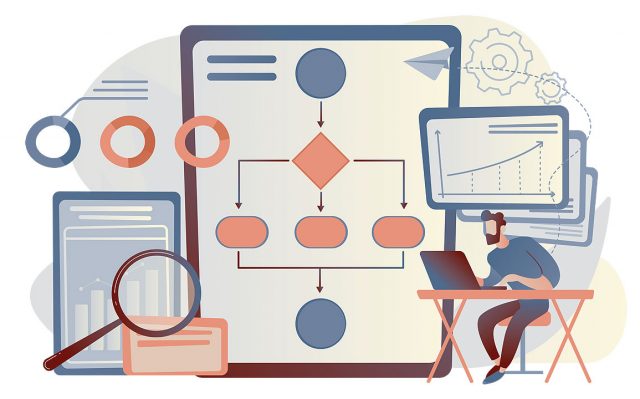Future of work and workers

Human Side Of Economics
Bernardo M. Villegas

(Part 2)
In the book
Thank You for Being Late
, Thomas Friedman cites abundant data from economist James Bessen who authored the book
Learning by Doing: The Real Connection Between Innovation, Wages, and Wealth
. The major question addressed in the book is whether or not automation always leads to unemployment in the whole economy in general.
The first case discussed concerned weavers in the textile industry during the First Industrial Revolution in England. In the 19
th
century, 98% of the labor involved in weaving a yard of cloth got automated. The task went from 100% manual to 2%. Unexpectedly, the number of weaver jobs increased! The answer to the paradox is found in what is called Engel’s Law which states that as the real income of individuals and household increase, their demand for non-basic items increases exponentially. As Bessen explained: “When you automate a job that has largely been done manually, you make it hugely more productive. When that happens, prices go down and demand goes up for the product.” At the beginning of the 19
th
century, many people had one set of clothes, all of which were handmade. the end of that century, most people had multiple sets of clothing. Because of the big drop in the prices of textile, the real incomes of individuals increased, enabling them to afford non-basic items. In addition to multiple sets of clothing, they started buying textile products for drapes on their windows, rugs on their floors, and upholstery for their furniture. As Bensen clarified: “As the automation in weaving went up and price went down, people found so many more uses for cloth, and demand exploded enough to actually offset the substitution of more machines for labor.”
Let us bring this discussion closer to the banking sector. Bessen examined the example of cash machines, which began to be deployed in the 1990s in large numbers in the US and now are everywhere. The expectation was that these machines would replace bank tellers. Exactly the opposite happened: “The number of full-time equivalent bank tellers has grown since ATMs were widely deployed during the late 1990s and early 2000s. Indeed, since 2000, the number of full-time equivalent bank tellers has increased 2% annually, substantially faster than the entire labor force… Because the ATM allowed banks to operate branch offices at lower cost, they were prompted to open many more branches, offsetting the erstwhile loss in teller jobs. At the same time teller skills changed. Non-routine marketing and interpersonal skills became more valuable, while routine cash handling became less important. That is, although bank tellers performed relatively fewer routine tasks, their employment increased.”
This example highlights the importance for our school systems to produce more graduates who are good in critical thinking, effective communication, and inter-personal skills rather than specific technical skills which can be better acquired on the job.
The example of the ATM is not an exception. The following are similar situations in which automation did not lead to a drop in the number of jobs available in the whole economy:
• Barcode scanners reduced cashier’s checkout times by 18-19%, but the number of cashiers has grown since scanners were widely deployed during the 1980s.
• Since the late 1990s, electronic document discovery software for legal proceedings has grown into a billion-dollar business doing work done by paralegals, but the number of paralegals has grown robustly.
• E-commerce has also grown rapidly since the late 1990s, now accounting for over 7% of retail sales, but the number of people working in sales occupations has grown since 2000.
Another interesting case is that of the demand for receptionists in offices. Receptionists whose main task is to answer the phone will be replaced by voice mail or call centers. Bessen noted, however, that there are still receptionists who answer phones and take messages but do other things as well. So, the number of telephone operators has declined dramatically (from 317,000 full-time equivalent in 1980 to 57,000 in 2017) while the number of receptionists has grown by more (438,000 to 896,000). Obviously, receptionists require more and different skills than switchboard operators.
Additionally, technology can create demand for totally new jobs — think data science engineers — even as it transforms the skills needed for some old routine jobs, such as bank tellers and paralegals and store clerks, that would seem to be made obsolete by computers and robots but actually aren’t. In fact, technology can vastly increase the skills needed to practice old jobs that have been transformed by computers and similar devices. A perfect example here is the graphic designer. A graphic designer who can use computer-aided design software makes a lot more money than an old-fashioned typesetter.
These considerations derived from empirical evidence in advanced economies like the United States lead me to the following observations. For the vast majority of the existing labor force of 48.45 million today, that may swell to close to 60 million 10 years from now, the skills needed by the ordinary workers in the farming, fisheries and forestry sectors; MSMEs in manufacturing and services; construction, mining, and public utility are more efficiently developed in the worksite itself. The education needed by these workers should be addressed by the K to 12 curriculum that should be geared towards providing the youth with the necessary formation to live fully human lives. Basic education should not be primarily geared towards making people useful economically, except in the last two years of the K to 12 curriculum which follow the TESDA route in producing technically skilled workers. Every product of the basic education program should acquire minimum skills in critical thinking, effective communication, and inter-personal relations.
Those who have the talents to advance to higher studies, independent of the financial capability of their respective families, should be enabled to aspire for what we can call “middle-class jobs” for want of a more appropriate term. These are the jobs which require higher levels of critical thinking, effective communication, and inter-personal relations. As we read in
Thank You for Being Late
, every middle-class job is now being pulled in four directions at once — and if we are going to train our citizens to thrive in such a world, we have to think afresh about each direction and what new skills or attitudes go with it in order to find a job, hold a job, and advance in a job. For starters, middle-class jobs are being uploaded up faster —they require more knowledge and education to perform successfully. To compete for such jobs, you need more of the three Rs — reading, writing, and arithmetic — and more of the four Cs
— creativity, collaboration, communication, and coding. These should be the basis for designing the curricula of our institutes of higher education and of the many
non-formal and informal means of delivering to our knowledge workers a lifetime of continuing education. Increasingly, we have to question the value of a college degree after high school. Many of the skills needed by our upper-middle income economy may be better developed by non-degree, non-formal or informal means of education.
To be continued.
Bernardo M. Villegas has a Ph.D. in Economics from Harvard, is professor emeritus at the University of Asia and the Pacific, and a visiting professor at the IESE Business School in Barcelona, Spain. He was a member of the 1986 Constitutional Commission.
